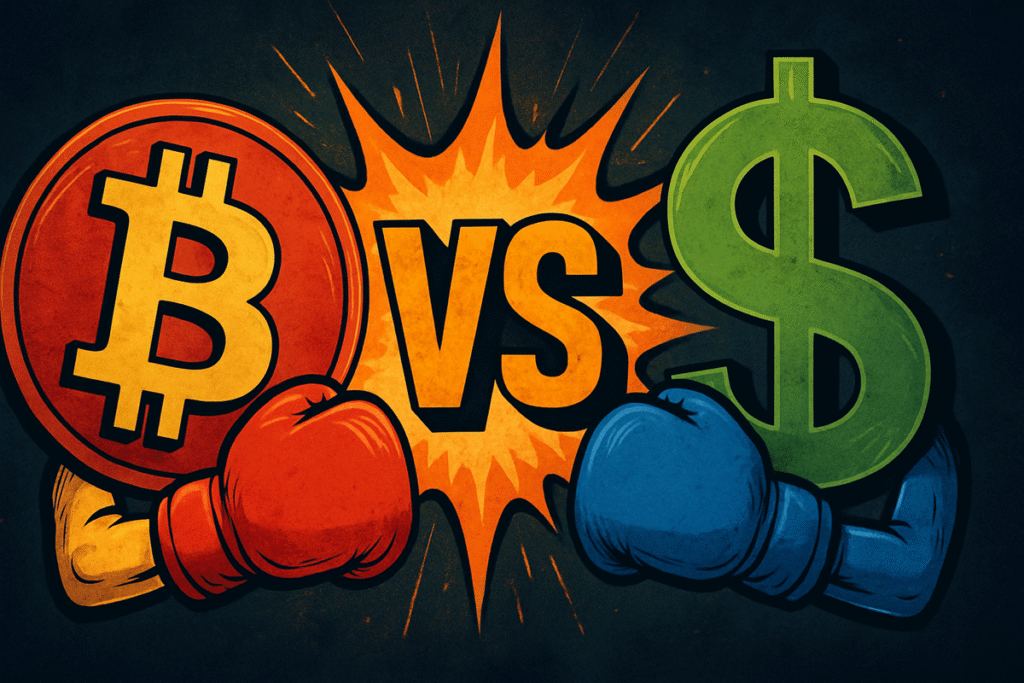In the rapidly evolving landscape of global finance, Tim Draper, a renowned venture capitalist and early investor in Bitcoin, envisions a revolutionary shift in the way we perceive and utilize currency. Widely recognized for his strategic foresight, Draper argues that Bitcoin will gradually supplant traditional government-issued money within the next decade. This transition is not merely speculative; Draper’s vision is supported by an amalgamation of Bitcoin’s inherent advantages and a changing global financial ecosystem. This guide explores Draper’s insights and the potential of Bitcoin as a mainstream currency while addressing common questions about its future.
Bitcoin’s Potential to Replace Traditional Currency
Comparing Bitcoin with the US Dollar
Tim Draper, during a comprehensive podcast discussion, boldly projected that Bitcoin could potentially overtake the US dollar as the preferred currency in approximately ten years. This shift is primarily based on his belief that Bitcoin, as a software-based currency, embodies superior technological benefits over traditional money issued by governments. He predicts a pivotal moment when the trust in conventional banking systems declines, compelling consumers to opt for a non-inflationary financial standard like Bitcoin. Draper highlights that the banking sector’s increasing involvement in cryptocurrency custody will facilitate a seamless transition by allowing customers to transfer their deposits digitally without the need for physical cash.
Rationale Behind Draper’s Bitcoin Optimism
Draper’s unwavering confidence in Bitcoin’s future is rooted in its fixed supply and the push towards global, unrestrained commerce. With nearly 19.86 million Bitcoins circulating, nearing the total cap of 21 million, Draper argues that fiat currencies are inherently prone to losing value over time. Drawing parallels to past historical currency collapses, he underscores the vulnerabilities of inflation-prone fiat systems. Notably, regulatory approval, such as the US Office of the Comptroller of the Currency’s endorsement of banks offering crypto-asset custody, further strengthens his case for Bitcoin as a bridge between traditional money and digital assets.
Market Dynamics and Future Predictions
Currently, Bitcoin is valued at over $103,500, driven by increased institutional interest and the launch of spot-ETFs. Draper confidently reaffirms his forecast of Bitcoin reaching $250,000 by the end of 2025, although he now envisions an even more exponential rise in value when considering a ten-year horizon, arguing that Bitcoin’s value may become limitless compared to the dollar once daily transactions are regularly conducted on blockchain networks.
The Role of Stablecoins and Government Adaptation
While dollar-pegged stablecoins continue to play a vital role in the digital economy, Draper views them as temporary solutions bridging the gap to Bitcoin. Despite the persistent political and inflation risks associated with reserve currencies, he foresees governments eventually embracing blockchain technology, with roles as node operators and holders of treasury reserves, as it offers a more efficient method for tax collection.
Challenges and Skepticism
Critics emphasize the long-standing dominance of reserve currencies, supported by geopolitical influence and robust capital markets. Nonetheless, Draper remains optimistic, challenging businesses to maintain sufficient Bitcoin reserves to manage payroll during potential banking crises and advising households to secure at least a six-month living expense in Bitcoin as a prudent financial measure.
Is Bitcoin poised to replace traditional currencies?
Bitcoin’s potential to replace traditional currencies hinges on several factors, including regulatory acceptance, technological advancements, and broader economic conditions. While Tim Draper is optimistic, this transition remains uncertain and requires careful consideration of evolving market dynamics.
What are the key advantages of Bitcoin over fiat currencies?
Bitcoin offers several advantages over fiat currencies, such as a fixed supply cap, resistance to inflation, and the ability to facilitate borderless transactions without the need for intermediaries, enhancing both security and efficiency.
How should individuals prepare for a potential shift to Bitcoin?
Individuals interested in transitioning to Bitcoin are advised to conduct thorough research, diversify their investments, and secure a wallet capable of managing digital assets. Maintaining a balance of traditional and digital currencies can mitigate risks while capitalizing on potential growth opportunities.
In conclusion, this comprehensive exploration delves into the fundamental aspects of Bitcoin’s technology, its potential as an investment, and its position within the global economic framework. By understanding these dynamics, readers can make well-informed decisions regarding their financial futures amidst an ever-evolving economic landscape.

